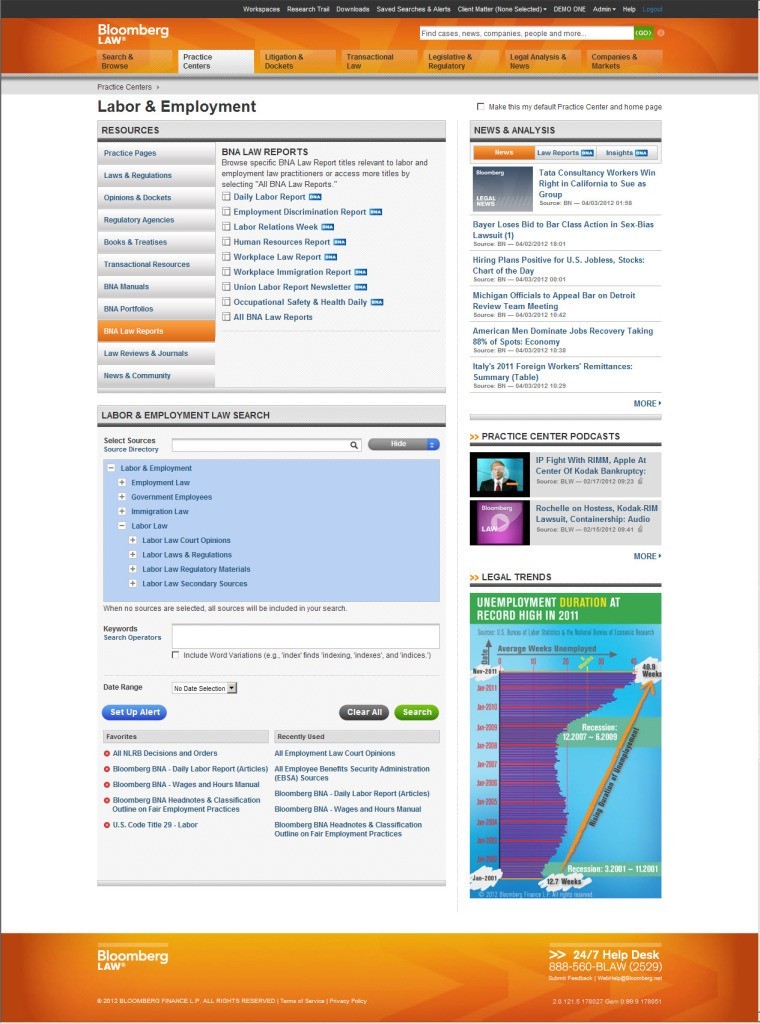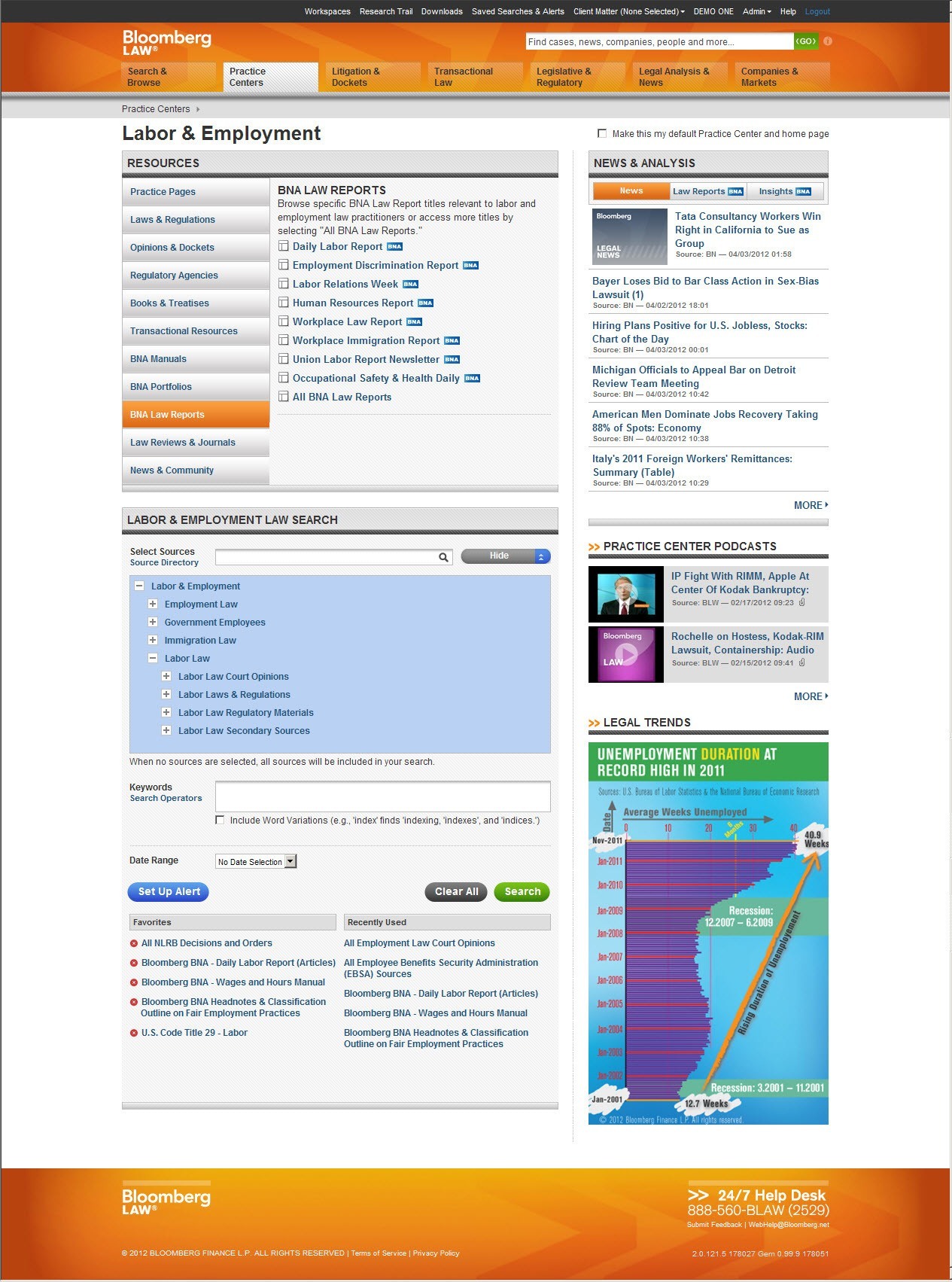I have followed the birth and development of Bloomberg Law with great interest. After all, it requires a bit of chutzpah to launch a legal research platform with the goal of competing against Westlaw and LexisNexis on their own turf. It also requires a bit of cash. Bloomberg Law has both.
When it officially launched in December 2009, I wrote a review giving it credit for “getting into the game with swagger” by loading up on primary legal content, creating its own editorial enhancements, and developing its own citator to rival Shepard’s and KeyCite. But I also said that it was a “work in progress” and I likened it to a luxury yacht only partially constructed. “It is seaworthy,” I said, “but still has a lengthy punch list.”
By July 2011, when Bloomberg Law released “the next evolution” of its legal research platform, it had made great strides in its development, with a redesigned interface, enhanced search capabilities, new practice centers and enhanced collaboration and workflow features. And while the platform had come far closer to matching the breadth of resources available on Westlaw and LexisNexis, it still lagged behind in its collection of secondary legal materials such as treatises and practice guides, as its chairman, Lou Andreozzi acknowledged in an interview with me at the time.
Given this history, Bloomberg’s announcement last August that it would acquire BNA — with its highly regarded collection of materials covering labor and employment, tax and accounting, intellectual property, banking and securities, human resources, environmental law, health care and more — promised to narrow that gap in secondary resources.
Yesterday, Bloomberg Law unveiled the fruits of its BNA acquistion. Now, Bloomberg Law subscribers have full access to all BNA content. Keep in mind that Bloomberg Law is a flat-rate, all-access platform. That means that BNA access requires no extra fees and no hunting through peripheral libraries. The BNA materials are fully integrated within Bloomberg Law. You want BNA’s Daily Labor Report? It’s there in Bloomberg Law, for no extra cost.
In fact, the integration effectively adds value to the BNA products. Now, all references within the BNA materials are hyperlinked to source materials. When you see references to cases, statutes, news articles and the like, you can click on any of them to see the source document. This is a level of integration you don’t see if you subscribe individually to BNA materials through the BNA website (which you can still do).
Plus, the BNA materials are fully integrated into Bloomberg Law’s practice centers. The practice centers (see the screencap below) are sections of Bloomberg Law that pull together key resources for subjects such as labor and employment law and intellectual property law. While the BNA materials are fully integrated with the search and browse structures of these practice centers, they also remain easy to find on their own. With the click of a checkbox, a user can set any practice center page as a home page.

Labor & Employment is one of the practice centers that incorporates BNA materials. (Click image for larger view.)
“We were always lacking a good legal research platform on which to showcase our content,” BNA CEO Greg McCaffery told me in an interview this morning. “It’s been a joy working with a legal research platform where we could not just post the content, but actually build it into Bloomberg Law. The user experience will be quite different.”
A Wide Range of BNA Products
If you are not familiar with the full range of BNA products, you can find a list on the BNA website. Among the products now integrated into Bloomberg Law are:
- More than 120 current-awareness law reports, including the Daily Labor Report, the Daily Tax Report, the Daily Report for Executives and The United States Law Week.
- Bloomberg BNA’s professional books, treatises and manuals, including Harmon on Patents, Section 409A Handbook and ERISA Litigation.
- The portfolio series of practical guidance written by leading practitioners, including the complete Corporate Practice Series.
- Bloomberg BNA’s headnotes and classifications outlines, such as U.S. Patents Quarterly, that are easily searchable and organized by experienced editors.
All new BNA content will now flow directly into Bloomberg Law. That includes any new products the company develops. The BNA editorial team, based in Arlington, Va., is now part of the Bloomberg Legal Division and works closely with Bloomberg editors in New York.
What’s next for Bloomberg Law? I put that question to Chairman Lou Andreozzi this morning and here’s what he said: “Consistent with what we’ve been doing, we’ll continue to put greater functionality on the product and add value at no additional cost. We still have an editorial team working to build out secondary content. The combination of the two cultures has created an impressive editorial team.”
Last month, the American Association of Law Libraries awarded Bloomberg Law its 2012 New Product Award. The award, which will be presented at the AALL annual meeting in Boston in July, recognizes new commercial information products that enhance or improve existing law library services or procedures or innovative products which improve access to legal information, the legal research process, or procedures for technical processing of library materials.
Bloomberg Law also recently announced that the law firm DLA Piper had contracted to integrate the legal research service throughout its 1,400-lawyer firm.
The combination of chutzpah and cash is proving to be potent for Bloomberg Law. Not to be discounted is the underlying Bloomberg news and financial network that gave birth to this platform. Much of that content, of course, is tightly integrated into Bloomberg Law. That results in a platform that is powerful for not just legal research, but also for business and current-awareness research.
For Bloomberg Law, it seems, the punch list grows shorter by the day.
 Robert Ambrogi Blog
Robert Ambrogi Blog